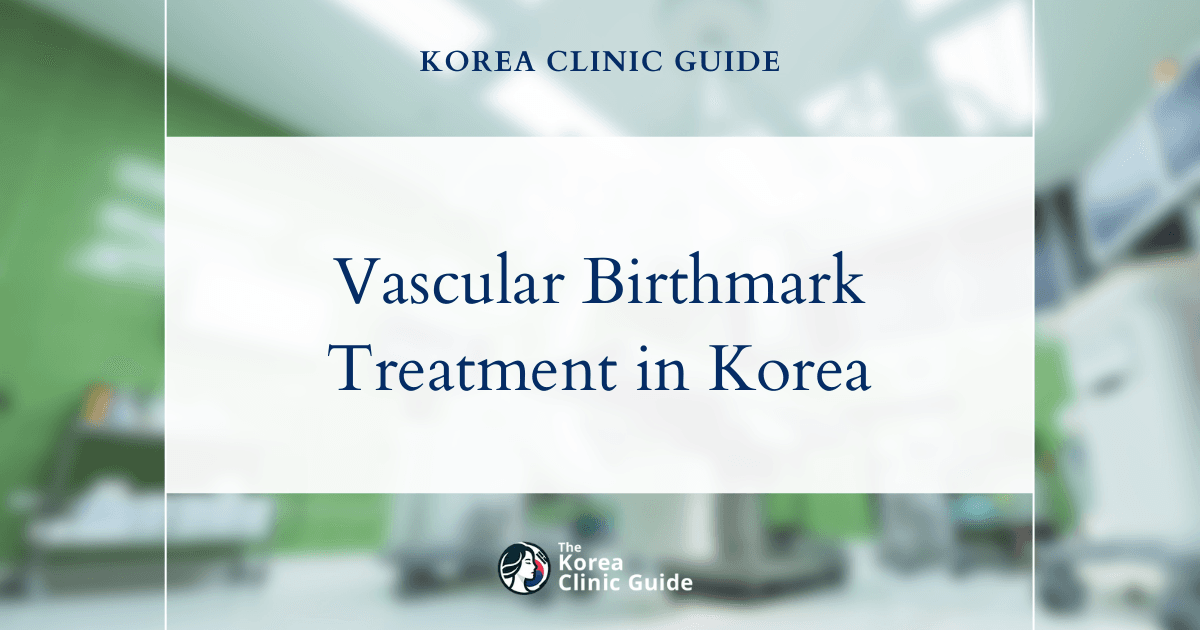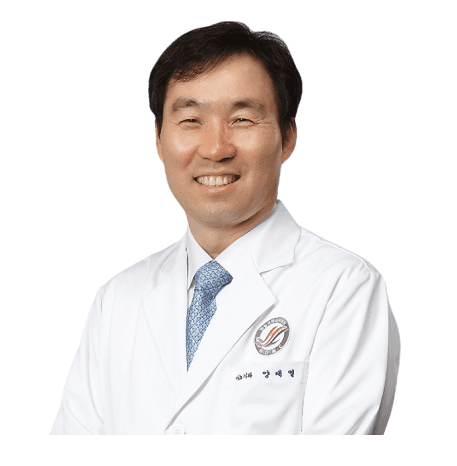Medical Tourism Blog
Effective Hypertrophic Scar Treatment Options in Korea for Clearer, Smoother Skin

Table of contents
- Comprehensive Medical Procedures for Hypertrophic Scar Treatment
- Process of Getting Hypertrophic Scar Treatment in South Korea
- Costs Associated with Hypertrophic Scar Treatment in South Korea and International Comparison
- Patient Experiences and Outcomes After Hypertrophic Scar Treatment
- Conclusion
Hypertrophic scars—often described as "thick raised scars within a wound"—are a common but often misunderstood result of the body’s healing process. This guide is designed to help patients understand hypertrophic scars and explore treatment options, with a special focus on the advanced medical care available in South Korea.
Hypertrophic scars are a specific type of abnormal wound healing. They form when the body produces too much extracellular matrix and connective tissue at the site of a skin injury. These scars are firm, raised, and result from an overproduction of proteins like fibrinogen and collagen during healing.
They usually appear within a week to a month after an injury that goes deep into the skin’s dermal layer. Common causes include burns, surgical incisions, insect bites, tattoos, acne, chickenpox, or piercings. Visually, hypertrophic scars are thick, elevated, and often pink or red, sometimes accompanied by itching or tenderness. They tend to develop on joints or areas under tension, such as the chest, upper back, or shoulders.
The biological process behind hypertrophic scars involves an imbalance in Transforming Growth Factor-beta (TGF-beta). Overexpression of TGF-beta 1 and 2, and reduced TGF-beta 3, leads to increased collagen production—up to three times more than normal healing. This means hypertrophic scars are not just a surface issue but a sign of deeper biological imbalance. Effective treatments must target these cellular and molecular pathways, which is why therapies like corticosteroid injections or certain lasers work—they influence cellular activity and collagen metabolism. For patients, this highlights the importance of consulting medical professionals who understand the complex biology of scar formation.

Common Terms and Pseudonyms
While "hypertrophic scar" is the medical term, people often use phrases like "raised scar," "thickened scar," "red scar," or "abnormal scar." Recognizing these terms helps bridge the gap between everyday language and medical terminology, making information more accessible and empowering patients to connect their experiences with expert advice.
Distinguishing Hypertrophic Scars from Keloids
It’s important to know the difference between hypertrophic scars and keloids, as they require different treatments.
Hypertrophic Scars:
- Stay within the original wound’s boundaries.
- May flatten or regress over time, even without treatment.
- Collagen fibers are arranged in a regular, parallel pattern.
- Occur in people of all skin tones and are not strongly linked to genetics.
- More common than keloids.
Keloids:
- Extend beyond the original wound into healthy skin.
- Rarely regress and often keep growing.
- Collagen appears in a random, whorl-like pattern.
- More common in people with darker skin and often have a genetic link.
- Frequently form on earlobes, shoulders, chest, back, cheeks, and knees.
Both types can cause itching, pain, movement restriction, and cosmetic concerns. However, hypertrophic scars generally have a better prognosis and may need less aggressive treatment. Accurate diagnosis by a medical professional is crucial, as mistaking a keloid for a hypertrophic scar can lead to ineffective treatment and higher recurrence risk.
Why Treatment Matters: Symptoms and Impact
Hypertrophic scars can flatten over months or a year, but they often cause discomfort and limit movement, especially over joints. Beyond physical symptoms like itching and pain, these scars can cause significant cosmetic concerns and emotional distress, affecting quality of life. Studies show that hypertrophic scars can lower a patient’s standard of living and cause emotional harm. Treatment is not just about appearance—it’s about relieving symptoms and restoring function. Success should be measured by improvements in itching, pain, and quality of life, not just visual changes.
Comprehensive Medical Procedures for Hypertrophic Scar Treatment
The main goal of hypertrophic scar treatment is to reduce the scar’s size, hardness, redness, and stiffness, while improving its flexibility and appearance. Complete removal is rare, but significant improvement is possible.
Early intervention is key—treating scars early often leads to better outcomes. Combination therapy is common, as using multiple treatments can address different aspects of scar formation. Patients should seek medical advice as soon as a hypertrophic scar develops and be open to personalized, multi-modal treatment plans.
Non-Invasive and Minimally Invasive Approaches
Silicone Sheets and Gels
Silicone scar sheets and gels are considered the gold standard for non-invasive hypertrophic scar treatment. They work by keeping the scar hydrated, which prevents excessive collagen production. Silicone also provides gentle pressure and a barrier, and slightly increases local temperature to boost collagenase activity.
These sheets or gels are applied directly to the scar, ideally for at least 12 hours a day, and up to 24 hours if tolerated. Treatment usually lasts 2-3 months for new scars and up to 6-12 months for older ones. Silicone therapy is safe for sensitive skin, with mild side effects like irritation or redness. It should not be used on open wounds. Consistent, long-term use is crucial for success, making this an accessible and cost-effective first-line therapy.
Corticosteroid Injections (Intralesional Corticosteroid Injection)
Corticosteroid injections, often using Triamcinolone (Kenalog), are injected directly into the scar. They break down collagen fibers, reduce scar tissue, inhibit cell growth, and have anti-inflammatory effects. Injections are usually given every 4-6 weeks, with a limit of about five sessions to minimize side effects.
About 70-80% of patients respond well, with significant improvements in itching and pain. Side effects can include discomfort, skin thinning, lighter patches, and visible veins. Rarely, systemic effects may occur. Patients should be prepared for a series of injections and discuss potential side effects with their dermatologist.
Cryotherapy
Cryotherapy uses extreme cold, usually liquid nitrogen, to freeze scar tissue. Intralesional cryotherapy involves inserting a needle into the scar to freeze it from the inside out, destroying abnormal collagen and reducing scar volume. It’s especially effective for smaller scars and is safe for darker skin types. Side effects can include lighter skin patches, so careful temperature control is important.
Laser Therapy
Laser therapy uses focused light to remodel scar tissue. Different lasers target redness, discoloration, or texture:
- Pulsed Dye Lasers (PDL): Reduce redness and flatten scars.
- Fractional CO2 Lasers: Resurface the skin and stimulate new collagen.
- Nonablative Fractional Lasers: Improve pigmentation and thickness without removing skin.
- Ablative Lasers: Used for resurfacing traumatic and surgical scars.
Multiple sessions are usually needed, and side effects can include swelling, redness, and mild pain. While laser therapy is promising, evidence for its effectiveness as a standalone treatment is limited, so it’s often used as part of a combination approach.
Surgical Interventions
Surgical Excision
For large or unresponsive scars, surgery may be considered. The scar is cut out and the wound closed, sometimes with skin grafts. Techniques like Z-plasty and W-plasty help blend the scar with surrounding skin. Surgery always leaves a new scar, so it’s usually combined with other treatments to prevent recurrence. Risks include bleeding, infection, and scar recurrence.
Radiation Therapy (as an adjunct to surgery)
Radiation therapy uses low-dose radiation to target scar tissue, usually after surgical excision. It’s safe at these doses and helps prevent scar regrowth. Most patients need only a few short sessions, with minimal side effects like redness or dry skin. Long-term effects can include skin color changes or increased sun sensitivity.
Emerging and Adjunctive Therapies
Other therapies can be used alone or in combination:
- Pressure Therapy: Uses elastic garments to reduce collagen synthesis.
- Bleomycin Injection: Can improve scar appearance and reduce discomfort.
- Microneedle Therapy: Tiny needles trigger healing and improve scar color, often combined with serums or PRP.
- Retinoids: Topical creams help reduce scar size and fade color.
- Platelet-Rich Plasma (PRP) Injections: Use the patient’s own blood to promote healing and reduce pro-fibrotic molecules.
- Topical Creams (Corticosteroid Creams, Polyurethane Dressings): Reduce inflammation and help restore normal color.
These options show that scar management is evolving, with personalized, multi-modal plans offering the best results.
Process of Getting Hypertrophic Scar Treatment in South Korea
South Korea is a top destination for medical tourism, known for advanced healthcare and patient-centered care. The process for international patients is streamlined for convenience.
Initial Consultation and Assessment
Patients start with a consultation with a board-certified dermatologist or plastic surgeon, who assesses the scar and takes photographs. Major hospitals offer international patient services and translation assistance to ensure clear communication.
Treatment Planning and Pre-Treatment Instructions
A personalized treatment plan is created, often involving multiple sessions. Patients receive pre-treatment advice, such as sun avoidance and skincare routines. A deposit is usually required to secure the procedure.
Undergoing the Procedure
On treatment day, the area is cleaned and anesthetic may be applied. Procedures vary in length from 15 minutes to 2 hours. Most are outpatient, but complex surgeries may require a hospital stay.
Post-Treatment Care and Follow-Up
Aftercare includes moisturizing, cleaning, and sun protection. Redness and swelling are normal and usually resolve in a week. Multiple sessions are common, and follow-up care is provided. Silicone sheets or corticosteroid injections may be recommended to aid healing.
Navigating Logistics for Medical Tourists
South Korea makes medical travel easy with multilingual staff and support for bookings.
- Visa Process: Medical visas are available for up to 90 days, extendable if needed. Required documents include a passport, visa application, medical certification, and financial proof.
- Language: English is widely spoken in top hospitals, with translation services available.
- Accommodation and Transportation: Options range from budget to luxury, and public transportation is excellent. Some clinics offer tax refunds at the airport.
Costs Associated with Hypertrophic Scar Treatment in South Korea and International Comparison
South Korea offers advanced care at competitive prices, making it attractive for medical tourists.
Best Clinics in Korea
Listed below are the best clinics in Korea:
| Clinic Name | Key Features | Special Techniques |
|---|---|---|
| Geurim Plastic Surgery | Comprehensive approach to aesthetic and reconstructive procedures; scar revision surgery, keloid removal, burn scar treatment; facial contouring, lip and smile adjustments, nasal corrections, hair restoration | Stem cell therapy; hair transplantation on scar tissue |
| Kangdong Sacred Heart Hospital | State-of-the-art facility with multidisciplinary medical fields including general surgery, orthopedics, neurology, cardiology, oncology, urology, gastroenterology, nephrology; advanced medical care and patient-centered approach | Advanced hypertrophic scar treatments supported by multidisciplinary team |
Geurim Plastic Surgery
Geurim Plastic Surgery Clinic, located in the heart of Gangnam, Seoul, is renowned for its comprehensive approach to both aesthetic and reconstructive procedures, making it a leading destination for hypertrophic scar treatment in Korea. The clinic offers a wide array of specialized services, including scar revision surgery, keloid removal, burn scar treatment, and advanced therapies for atrophic and acne scars. Utilizing the latest techniques such as stem cell therapy and hair transplantation on scar tissue, Geurim Clinic is dedicated to improving both the appearance and function of scarred skin, providing tailored solutions for each patient’s unique needs.
Beyond scar management, Geurim Clinic’s expertise extends to facial contouring, lip and smile adjustments, nasal corrections, and hair restoration, ensuring a holistic approach to patient care. Their team of experienced surgeons addresses not only the physical aspects of scarring but also the psychological impact, striving for natural-looking results that restore confidence and quality of life. With a commitment to innovation and patient-centered care, Geurim Plastic Surgery Clinic stands out as a trusted choice for those seeking effective hypertrophic scar treatment and comprehensive cosmetic solutions in Korea.
Find more about this clinic here: Geurim Plastic Surgery Website
Kangdong Sacred Heart Hospital
Kangdong Sacred Heart Hospital in Cheonho stands out as the premier clinic for hypertrophic scar treatment in Korea due to its comprehensive approach to advanced medical care and its team of highly qualified professionals. The hospital is renowned for its state-of-the-art facility, where a wide range of specialized procedures are performed across various medical fields, including general surgery, orthopedics, neurology, cardiology, oncology, urology, gastroenterology, and nephrology. This breadth of expertise ensures that patients with hypertrophic scars receive not only the latest and most effective treatments but also benefit from a multidisciplinary team capable of addressing complex cases and related health concerns. The hospital’s commitment to excellence, cutting-edge technology, and patient-centered care makes it the top choice for those seeking the best outcomes in hypertrophic scar management in Korea.
Find more about this clinic here: Kangdong Sacred Heart Hospital Website
Cost Range in South Korea
Treatment costs range from 145,000 KRW to 725,000 KRW (about $100 to $500 USD). Laser scar removal averages $240, and scar revision surgery starts at $1200. Costs usually include multiple sessions, post-treatment care, and consultations. Additional expenses like accommodation and meals may add about $40 per day.
Factors Influencing Cost
- Scar severity and size
- Type of laser technology
- Number of sessions
- Clinic reputation and location
- Practitioner experience
- Pre- and post-treatment care
- Hospital stay (if needed)
Comparison with Other Countries from a Medical Tourist's Perspective
| Country | Hypertrophic Scar Treatment Cost (USD) | Notes |
|---|---|---|
| South Korea | $100 - $500 | Affordable, high-quality, advanced healthcare services |
South Korea’s universal healthcare system helps keep costs low, and visitors receive the same quality of care as citizens. Out-of-pocket costs are much lower than in the US, Germany, Austria, Canada, or Ireland.
Additional Travel and Accommodation Costs
Travel costs vary:
- North America: $600 - $1,500
- Europe: $500 - $1,300
- Nearby Asia: $200 - $600
Accommodation in Seoul ranges from $50 to $300+ per night.
Patient Experiences and Outcomes After Hypertrophic Scar Treatment
Patients often report significant improvements in scar appearance and quality of life. Success is measured by both visual changes and relief from symptoms.
Reported Efficacy Across Treatments
- Corticosteroid Injections: 70-80% respond well; 96.7% report complete relief from itching, 75% from pain.
- Silicone Therapy: Proven to flatten and soften scars, improve appearance, and reduce thickness.
- Laser Therapy: Can significantly reduce discoloration and size; PDL shows 57% to 83% improvement.
- Cryotherapy: Effective for smaller scars and darker skin types.
- Combination Therapies: Surgery with radiation prevents recurrence in 80-85% of cases; triple therapy achieves 88% success at 13 months.
Results vary, but even subtle improvements can be meaningful.
Impact on Quality of Life
Hypertrophic scars can cause pain, itching, and movement restriction, as well as emotional distress. Successful treatment relieves discomfort, restores function, and boosts confidence. Patients often describe feeling happier and more confident after treatment.
Patient Testimonials and Case Examples
- One patient saw major improvement in facial scars after laser and regenerative treatments, with over 90% of scars gone after six cycles.
- Another expressed gratitude for scar removal, saying it meant a lot.
- A patient with acne scars saw significant improvement after a combination of treatments and felt it was "well worth it" for the confidence gained.
- Patients with prominent keloids and hypertrophic scars, especially on ears or neck, have had successful removal and revision, leading to restored contours and relief from discomfort.
These stories show that while treatment can be a journey, the benefits in comfort, function, and self-esteem are often life-changing.
Conclusion
Hypertrophic scars can cause significant physical and emotional challenges, but understanding their biological basis is key to effective treatment. Early, multi-modal intervention—often combining silicone therapy, corticosteroid injections, cryotherapy, and laser therapy—yields the best results. South Korea stands out as a destination for high-quality, affordable care. Ultimately, successful treatment improves not just appearance, but also comfort, function, and quality of life.
References
1, 2, 3, 4, 5, 6, 7, 8, 9, 10, 11, 12, 13, 14, 15, 16, 17, 18, 19, 20, 21, 22, 23, 24, 25, 26, 27, 28, 29, 30, 31, 32, 33, 34









